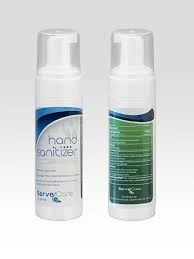OEM Polyacrylamide Solutions for Diverse Industrial Applications and Optimized Performance
Understanding OEM Polyacrylamide A Comprehensive Overview
Polyacrylamide (PAM) is a synthetic polymer widely utilized in various industries due to its diverse applications and effectiveness. Among its production methods, Original Equipment Manufacturer (OEM) polyacrylamide has emerged as a significant process that allows for customization and enhanced performance in specific applications. This article provides an overview of OEM polyacrylamide, exploring its manufacturing process, applications, and advantages.
What is Polyacrylamide?
Polyacrylamide is a water-soluble polymer made from acrylamide monomers. It can be synthesized in various forms, including anionic, cationic, and non-ionic types, depending on the intended application. This versatility makes polyacrylamide a crucial component in fields such as water treatment, agriculture, paper production, and oil recovery.
The Importance of OEM in Polyacrylamide Production
OEM production allows manufacturers to create customized products tailored to specific industry needs. In the context of polyacrylamide, this means that the polymer can be formulated with specific molecular weights, charge densities, and other characteristics to meet the demands of various applications more effectively. OEM polyacrylamide is produced under strict quality control and specifications set forth by the client, resulting in a product that integrates seamlessly into their existing processes.
How OEM Polyacrylamide is Manufactured
Manufacturing OEM polyacrylamide involves a series of well-defined steps
1. Sourcing Raw Materials The production starts with high-quality acrylamide monomers and other necessary chemicals, which are sourced from reputable suppliers.
2. Polymerization Process The acrylamide is polymerized through a method that may include free-radical initiation, where a chemical reaction leads to the formation of long polymer chains. The process is closely monitored to adjust parameters like temperature and pressure to achieve the desired polymer characteristics.
3. Formulation and Customization After polymerization, additives may be included to enhance specific properties such as solubility, stability, or reactivity. This step is crucial in the OEM process, as it ensures that the final product meets the end-user's specifications.
4. Quality Assurance OEM polyacrylamide undergoes rigorous testing to ensure it meets industry standards and client requirements. This may include checking its molecular weight, viscosity, and other relevant properties.
5. Packaging and Delivery Finally, the product is packaged in a manner that preserves its integrity during transportation and storage before being delivered to the client.
Applications of OEM Polyacrylamide
oem polyacrylamide

The applications of OEM polyacrylamide are vast and varied, reflecting its adaptability and effectiveness in different environments. Some of the notable applications include
- Water Treatment It serves as a flocculant for removing suspended particles in wastewater treatment facilities, helping to clarify water for industrial processes or municipal supply.
- Agriculture OEM polyacrylamide is used to enhance soil structure, improve water retention, and reduce erosion, making it invaluable in sustainable farming practices.
- Oil Recovery In the oil industry, polyacrylamide is used in enhanced oil recovery techniques, helping to increase the efficiency of oil extraction processes.
- Paper Production It is used as a retention aid and to improve the strength of paper products, contributing to increased efficiency in paper manufacturing.
Advantages of Using OEM Polyacrylamide
By opting for OEM polyacrylamide, companies can enjoy several benefits
- Customization Tailored formulations can lead to better performance in specific applications.
- Enhanced Efficiency Custom products can improve operational efficiency, reducing costs and time.
- Quality Assurance The rigorous quality control measures in OEM production lead to a reliable end product.
- Competitive Advantage Businesses can differentiate themselves by utilizing customized polyacrylamide solutions, providing them with a strategic edge in their market.
Conclusion
OEM polyacrylamide represents an essential facet of modern chemical manufacturing, enabling companies to create tailored solutions for a wide array of industrial applications. Its versatility, coupled with the ability to customize features according to specific requirements, makes it a pivotal material across various sectors. Understanding the benefits and applications of OEM polyacrylamide can empower businesses to optimize their operations and drive innovation in their respective industries.
-
Water Treatment with Flocculant Water TreatmentNewsJun.12,2025
-
Polymaleic AnhydrideNewsJun.12,2025
-
Polyaspartic AcidNewsJun.12,2025
-
Enhance Industrial Processes with IsothiazolinonesNewsJun.12,2025
-
Enhance Industrial Processes with PBTCA SolutionsNewsJun.12,2025
-
Dodecyldimethylbenzylammonium Chloride SolutionsNewsJun.12,2025





